As conversational search engines like Perplexity become more popular, understanding how to rank well on them is increasingly important. Unlike traditional search where users input keywords, Perplexity users ask full questions, mimicking natural conversation.
To illustrate the difference:
- Traditional Search: You might type “pizza Harrisburg PA” into Google.
- Perplexity: You’d ask, “What’s the best pizza place near me in Harrisburg, PA?”
With these differences in mind, here are some techniques you can use to optimize for conversational search on platforms like Perplexity.
Discover: What is Generative SEO?
How to rank in Perplexity
Learn how to rank in Perplexity answers now:
1. Practice ongoing SEO
From our experience across hundreds of answer engine campaigns, we’ve discovered that companies practicing ongoing search engine optimization (SEO) perform better in Perplexity. That’s because Perplexity operates similar to a search engine by:
- Using indexable and crawlable URLs to generate responses
- Citing authoritative domains relevant to a specific query
- Focusing on fresh, specific, and easy-to-digest content
Companies practicing ongoing SEO are one step ahead of competitors who aren’t — or who have paused their search engine optimization efforts. Continue investing in on-page, off-page, and technical SEO, and you’ll have a solid foundation for ranking in Perplexity.
Learn more about AEO vs. SEO optimization
2. Build an authoritative website
Compared to other answer engines, Perplexity is notable for its emphasis on a domain’s:
- Authority
- Reputation
- Trust
This setup can sometimes lead to bigger brands dominating responses, like Wikipedia for surface-level searches like “what is cold brew?” However, for more personalized searches like “what is the best way to store cold brew”, there is an opportunity for trusted smaller brands.
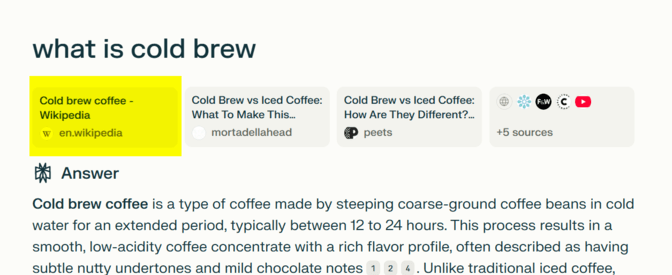
The most effective strategies for building an authoritative website go back to traditional SEO, like by:
- Producing shareable content, like insights from a recent survey
- Developing interactive content, like a calculator
- Generating reviews for online listings, like on Google Business Profile, G2, or Yelp
In most cases, this optimization is one of the most challenging tasks for brands because it requires creating something unique and getting it discovered. AEO services can provide the expertise to develop these assets and ensure they connect with your audience. With more than 400 million terabytes of data created on the Internet each day, there is a lot of noise for businesses to cut through.
3. Refresh content
Like Google, Perplexity aims to provide a search experience where users can ask timely questions, whether it’s getting the upcoming weather forecast or learning who won at the Grammy’s. That’s why Perplexity updates its index daily.
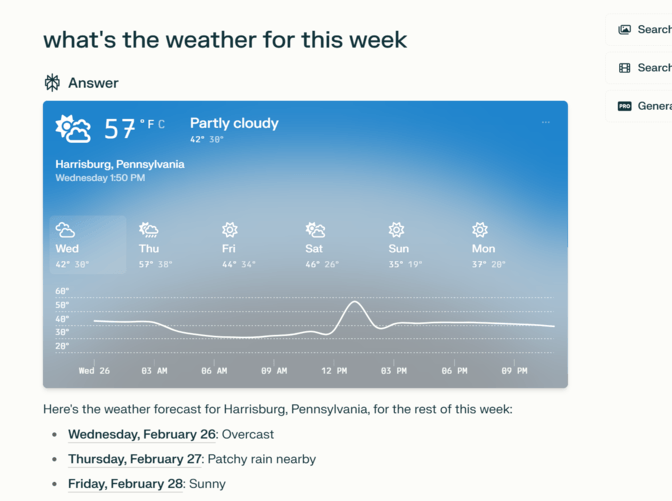
The answer engine even features a Discover section for the latest news:
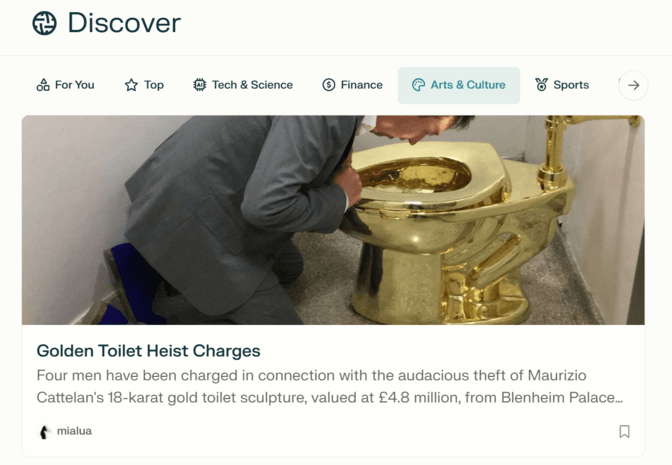
Companies looking to optimize their presence in timely (or even evergreen) topics can use content refreshes to boost their visibility. Similar to search engine optimization, these refreshes should add value to the page — versus changing a few words or phrases.
When refreshing content, consider questions like:
- Is the content still relevant?
- What has changed since publishing this article?
- Where are there content gaps?
Based on this initial research, you can create some specs for updating the content.
4. Leverage Q&A
Compared to search engines, answer engines receive more conversational searches. Instead of searching “cold brew storage” on search engines, users search “what is the best way to store cold brew” on places like Perplexity.
Because of that shift, businesses can benefit from creating Q&A sections within content, like:
| Question | Answer |
| What is the best way to store cold brew? | The best way to store cold brew is with an airtight refrigerated container. |
| Can I store cold brew in glass bottles? | Yes. Glass bottles are preferred because they’re nonporous, which prevents the cold brew from absorbing other flavors. |
| Does freezing cold brew affect its flavor? | Yes. Freezing cold brew can affect its flavor, text, and freshness, resulting in a poor-tasting experience. |
For the best results, focus on conversational questions and direct, concise answers. If you’re familiar with featured snippet optimization, the approach is similar to giving straightforward answers to common questions.
Tip: Use the Related section of Perplexity answers to generate Q&A ideas!
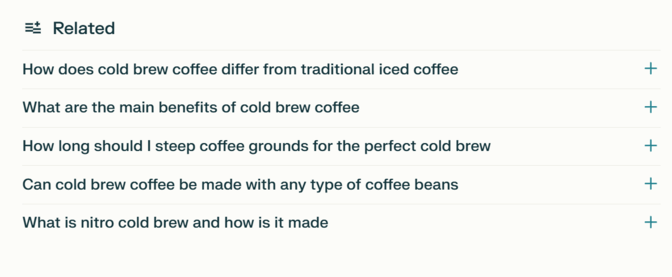
5. Optimize content structure
Like traditional SEO, Perplexity SEO focuses on improving content structure, like by:
- Structuring content based on search intent
- Organizing content into descriptive headings
- Using lists and tables to organize content
- Adding text formatting, like bold, underline, or italics, to emphasize points
These updates make content more useful, which is critical to search and answer engines. Plus, users visiting your website from Perplexity will have a better experience, which can lead to longer sessions, micro-conversions, and more.
6. Include multimedia
Multimedia is a frequent feature in Perplexity responses. That’s because the answer engine wants to provide users with options — more visual people can watch a video while more text-based users can read the AI-generated response.
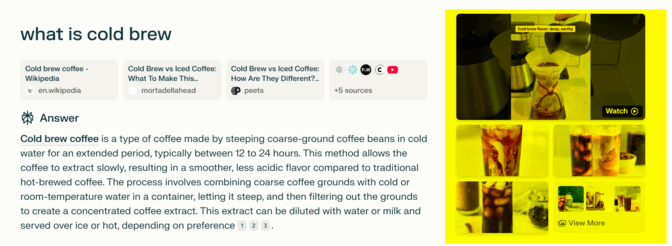
Companies without multimedia in their content miss an opportunity to reach users.
There are plenty of free and paid options for creating multimedia, whether it’s a video, graphic, or photograph. You can work with freelancers, use AI generators, and more to help users understand a concept, process, or offer.
Tip: Help users discover your brand by including your company logo on all visuals!
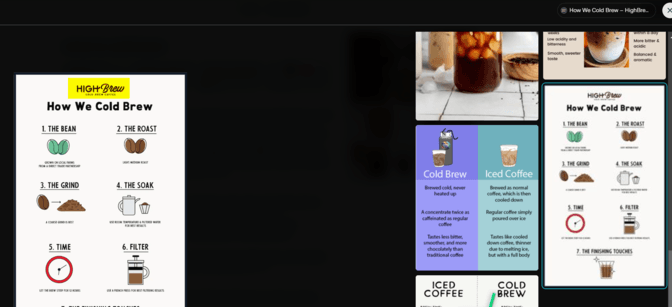
7. Enhance content with research
Content is one of the most important parts of ranking in Perplexity. Besides content freshness, structure, and visuals, well-researched content is also critical to appearing in Perplexity’s responses.
That’s because research provides new and additional insights.
Consider the earlier question, “what is the best way to store cold brew?” Your content could answer the question while sharing insights from a recent survey, like even though glass is the best storage option for cold brew, X% of users reported using plastic.
You can see a research-based response in Perplexity below: “Is cold brew popular?”
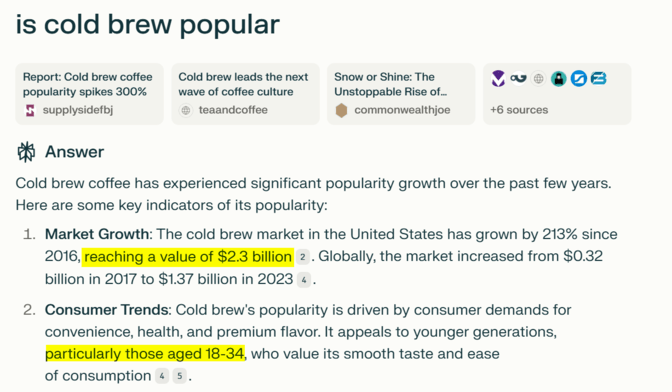
In this example, Perplexity doesn’t settle with a simple “Yes.” Instead, it includes research that supports its answer, such as how cold brew’s market share has grown over time and the age group most likely to drink it.
How to track Perplexity rankings
Like other answer engines, rank tracking is not convenient in Perplexity. Businesses looking to monitor and track their visibility will need to conduct searches manually or invest in a paid platform like OmniSEO™.
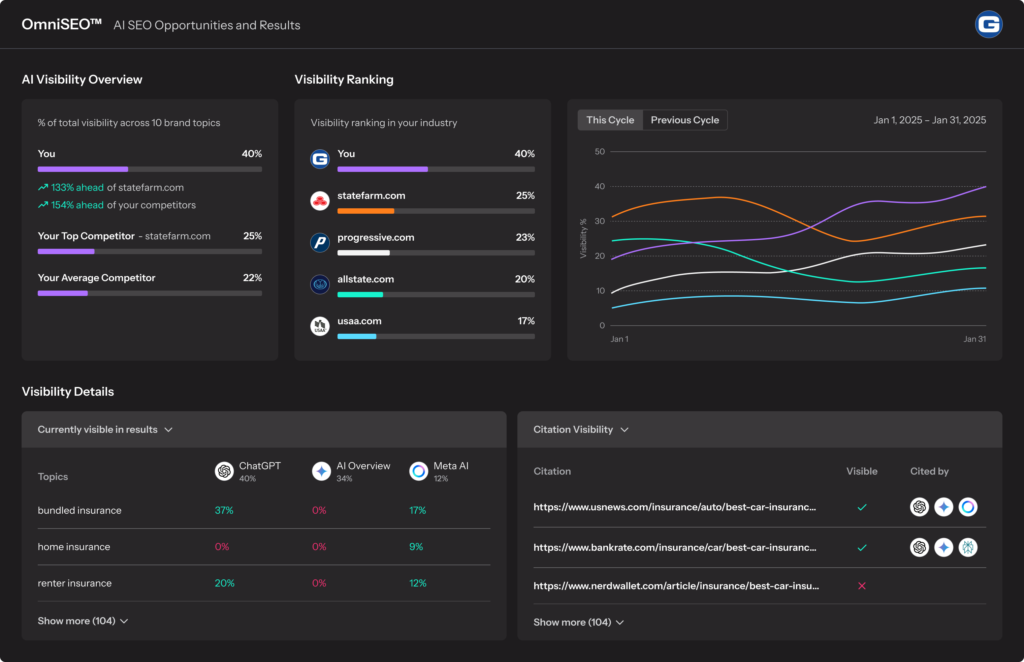
OmniSEO is a competitive option because you can track visibility across engines, including:
- Perplexity
- ChatGPT
- Gemini
- MetaAI
- Apple Intelligence
- Claude
- And more
Plus, organizations can monitor competitor visibility over time. That information — and benchmarking — can provide teams with valuable data for making informed decisions about their answer engine optimization strategy.
Get discovered in Perplexity with AI SEO
Congrats! You’ve learned to rank in Perplexity with AI SEO. Now, you’re ready to start growing your brand’s presence in Perplexity answers. Need professional help? Contact us online to learn how our AI SEO services can help!

Future-Proof Your SEO Strategy with OmniSEO™
Goodbye search engine optimization, hello search everywhere optimization.

FAQs about SEO for Perplexity
Got questions? Get answers with these FAQs:
What is Perplexity AI?
Perplexity is an AI-powered search engine that uses natural language processing (NLP) and machine learning (ML) to provide a natural, conversational search experience. This capability simplifies the search process by reducing your need to fine-tune searches yourself.
Because Perplexity understands context, you can ask follow-up questions without repeating previous queries. This capability creates a seamless flow of conversation that feels natural rather than robotic. You can also upload files to deepen the AI’s understanding.
You can also use Perplexity AI to generate content such as articles and images. Note that while this capability can save you and your team some valuable time and money, it’s still not a particularly effective SEO strategy.
How does Perplexity work?
According to Perplexity, “Perplexity serves as an answer engine by searching the web, identifying trusted sources, and synthesizing information into clear, up-to-date responses.” Like AI Overviews, it aims to provide the information users need without “sift[ing] through a list of links.”
From an SEO and AI marketing agency perspective, Perplexity works by:
- Prioritizing reputable and well-known sources, like Wikipedia
- Emphasizing fresh content, like a new article or updated post
- Focusing on relevancy, like a health-based blog vs. news site for a health-related query
- Highlighting different content formats, like text, video, and images
The above is similar to other search and answer engines. What separates Perplexity is its emphasis on well-known sources. A BrightEdge study found, for example, that Perplexity cited Yahoo, CNBC, and MarketWatch more than Google.
How could Perplexity AI affect SEO?
A recent study by the enterprise SEO company BrightEdge found that Perplexity searches are growing at a rate of 40% each month, and 60% of the citations provided in those searches overlap with the top 10 organic Google search results. What does that mean for search?
While Perplexity is sure to bring changes to the search world, SEO is still going to be important for attracting organic web traffic. Google, after all, is still testing their AI Overview — experts predict that upon its official launch, the AI Overview will overtake Perplexity again.
That said, the ranking criteria Google uses is what will likely see the biggest changes. Some examples include:
- Contextual relevance: Perplexity’s strong contextual understanding means you must consider contextual elements such as user intent and information relevance when creating content.
- Changes in search behaviors: As technologies like voice assistants become more popular, search language is likely to become more conversational over time. Moving away from focusing on keywords and prioritizing natural speech can help you appeal to these tools.
- Focus on user engagement: User engagement metrics, such as bounce rates and time spent on page, are likely to play an even larger role in search engine rankings. Focusing on human audiences rather than search crawlers can help you improve these metrics and look better to search engines as a result.
- Site credibility: The more authoritative your website, the better you’ll rank on AI-driven search engines like Perplexity. To improve your credibility, it can help to expand the scope of your SEO beyond individual pages to create a holistic content strategy.
How long does SEO for Perplexity take?
SEO for Perplexity can take as little as a few weeks to as long as a few months. How long it takes to see results will depend on an organization’s traditional SEO and its investment in answer engine optimization.
Companies practicing ongoing SEO for years, for example, and investing time and resources into AEO will often see results in a shorter time frame than companies that haven’t prioritized search engine optimization.
Is optimizing for Perplexity worth it?
Yes!
While not the most popular answer engine (that title goes to ChatGPT), Perplexity still boasts a sizable user base. The company processes more than 100 million searches each week — almost half a billion searches per month.
Companies investing in search everywhere optimization now, including for Perplexity give themselves a competitive advantage. Instead of starting Perplexity optimizations later, when there is more competition, these companies will have a solid foundation (and presence) on the platform.
Table of Contents
- How to Rank in Perplexity
- 1. Practice Ongoing SEO
- 2. Build an Authoritative Website
- 3. Refresh Content
- 4. Leverage Q&A
- 5. Optimize Content Structure
- 6. Include Multimedia
- 7. Enhance Content with Research
- How to Track Perplexity Rankings
- Get Discovered in Perplexity with AI SEO
- FAQs About SEO for Perplexity
- What is Perplexity AI?
- How Does Perplexity Work?
- How Could Perplexity AI Affect SEO?
- How Long Does SEO for Perplexity Take?
- Is Optimizing for Perplexity Worth It?
Related Resources
- Measuring Success in Omnichannel SEO
- Meet SEO’s New Era: Search Everywhere Optimization
- Meta AI for Business: Understanding Meta Business AI Tools
- OmniSEO™ – Rank Everywhere
- What is Answer Engine Optimization? The SEO’s Guide to AEO
- What is Generative Engine Optimization (GEO)?
- What is Omnichannel SEO?
- Will AI Replace Google? The Future of AI and Google Search
- Will AI Replace SEO As We Know It?
- 50+ AI Marketing Statistics in 2025: AI Marketing Trends & Insights
Writers


Meet
The top digital marketing company behind SEO.com.
Ready to get results? Connect with us, today!

